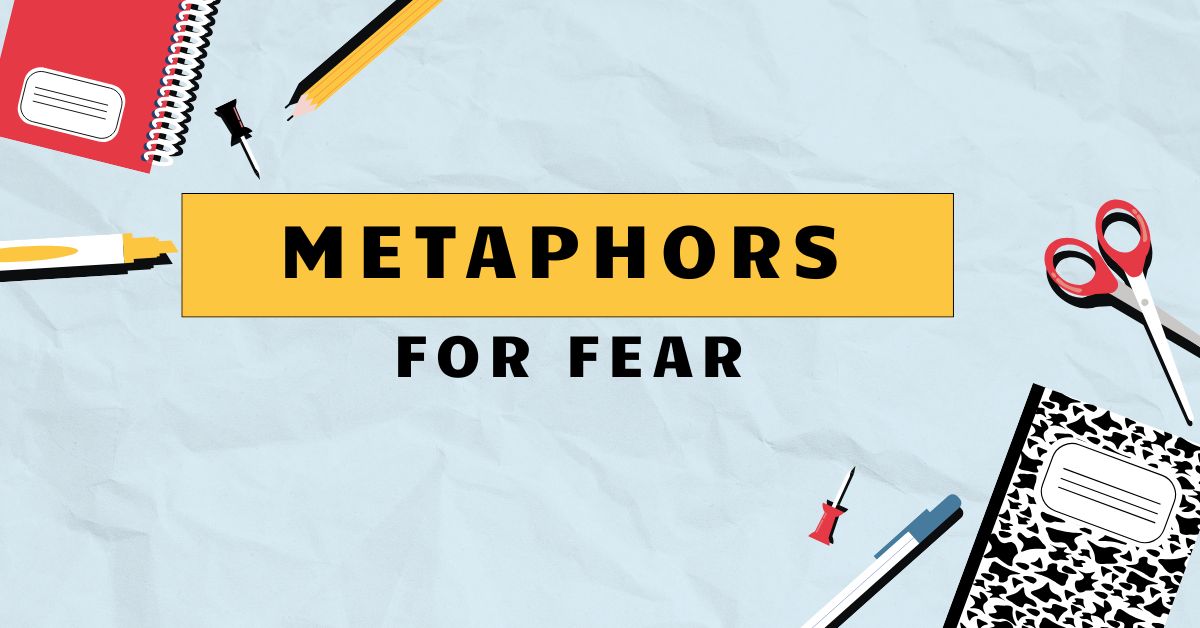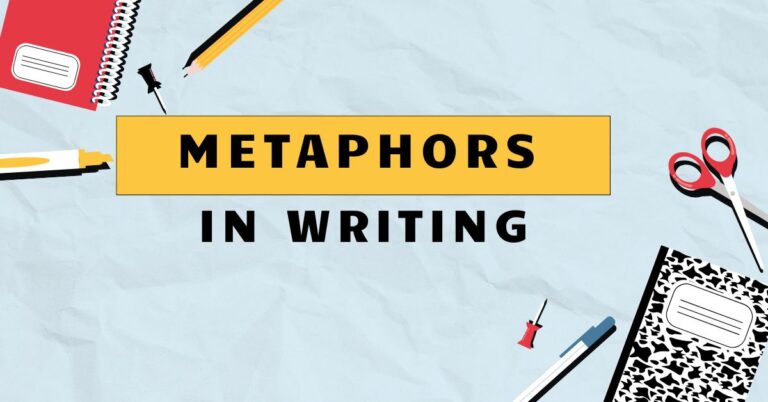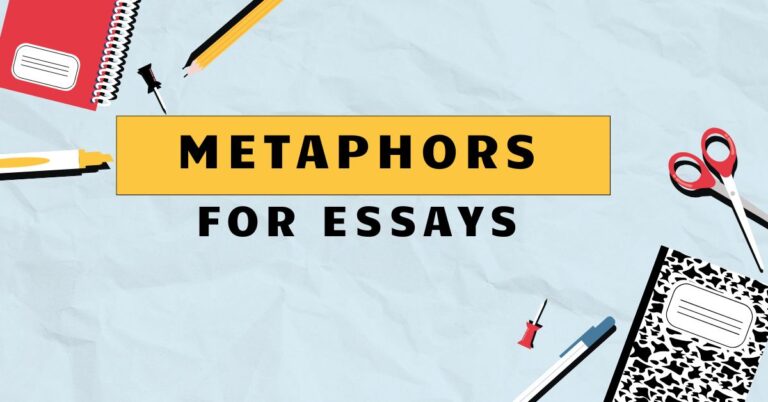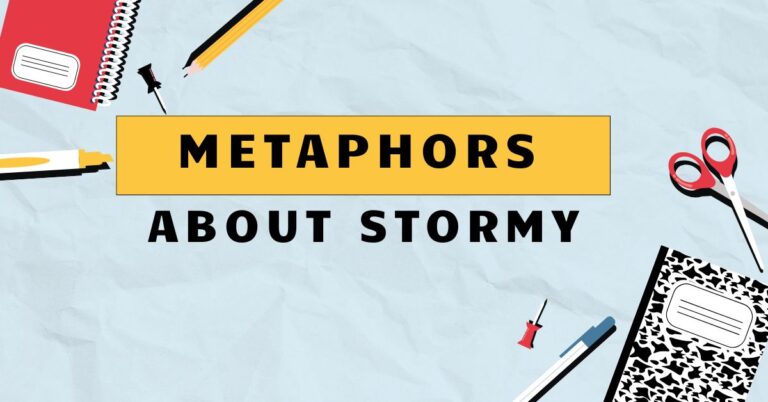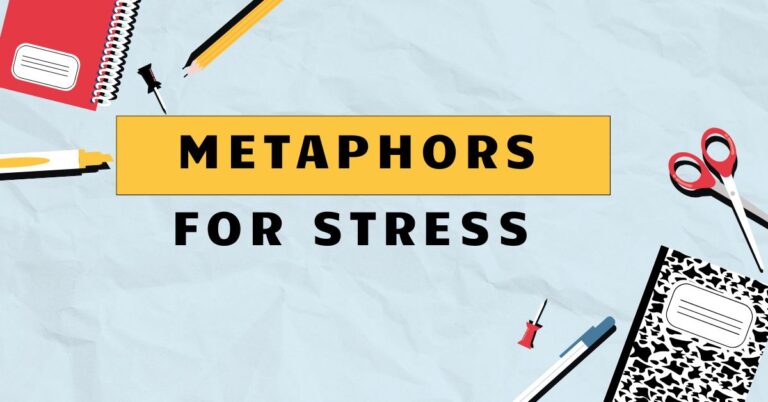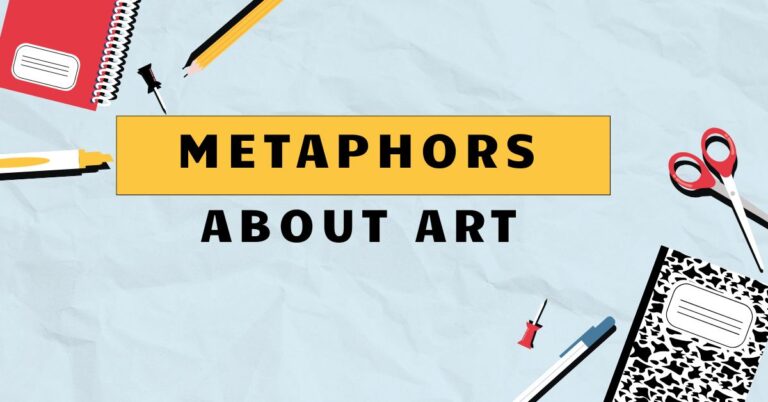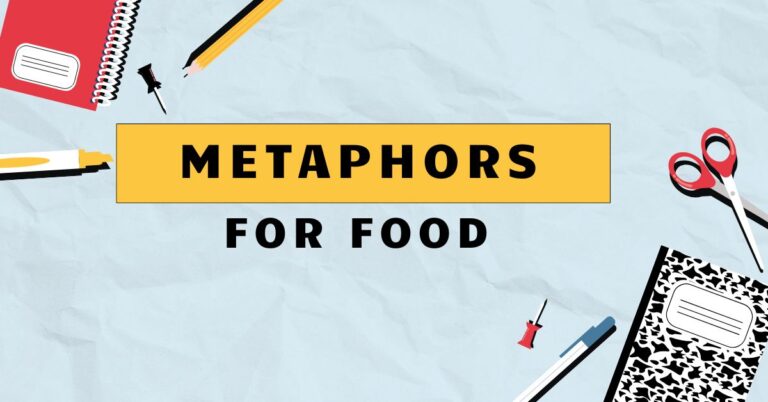33 Metaphors for Fear: Understanding Figurative Language
Fear is a powerful emotion, often difficult to articulate directly. Metaphors provide a vivid and nuanced way to express the complexities of fear, allowing us to understand its effects on our minds and bodies.
This article explores the diverse range of metaphors used to describe fear, enhancing your understanding of figurative language and improving your ability to express and interpret this fundamental human emotion. Whether you are a student, writer, or simply interested in language, this guide will provide valuable insights into the art of using metaphors to convey the experience of fear.
Table of Contents
- Introduction
- Definition of Metaphor for Fear
- Structural Breakdown of Fear Metaphors
- Types and Categories of Fear Metaphors
- Examples of Metaphors for Fear
- Usage Rules for Metaphors of Fear
- Common Mistakes When Using Metaphors for Fear
- Practice Exercises
- Advanced Topics in Metaphors for Fear
- Frequently Asked Questions
- Conclusion
Definition of Metaphor for Fear
A metaphor for fear is a figure of speech that describes fear by comparing it to something else that is not literally applicable. Instead of stating that someone is afraid directly, a metaphor uses an indirect comparison to evoke the feeling of fear.
This allows for a more vivid and impactful expression of the emotion. Metaphors are crucial in literature, poetry, and everyday language because they help us understand abstract concepts like fear by relating them to concrete experiences and objects.
By using metaphors, we can communicate the intensity, nature, and effects of fear in a more engaging and relatable way.
The function of a metaphor for fear is multifaceted. First, it provides a more expressive way to convey the emotion.
Second, it can help the audience better understand the specific characteristics of the fear being described. Is it a paralyzing fear?
A creeping dread? A sudden shock?
The right metaphor can capture these nuances. Third, metaphors can create a sense of empathy by tapping into shared experiences and associations.
For instance, comparing fear to being trapped in a dark room can resonate with many people who have experienced feelings of confinement and helplessness.
The context in which a metaphor for fear is used significantly impacts its effectiveness. In literature, metaphors can be carefully crafted to create a specific atmosphere or to reveal a character’s internal state.
In everyday conversation, metaphors might be used more spontaneously to express a fleeting feeling of anxiety or apprehension. In both cases, the goal is to communicate the subjective experience of fear in a way that is both meaningful and memorable.
Understanding the context helps in interpreting the metaphor and appreciating its intended effect.
Structural Breakdown of Fear Metaphors
A typical metaphor for fear consists of two main elements: thetenorand thevehicle. The tenor is the subject being described (in this case, fear), and the vehicle is the object or concept it is being compared to.
The connection between the tenor and vehicle is not literal but is based on shared qualities or associations. Understanding this structure is crucial for both creating and interpreting effective metaphors.
For example, in the metaphor “Fear is a cold hand gripping my heart,” the tenor is “fear,” and the vehicle is “a cold hand.” The shared qualities include the feeling of unease, constriction, and a loss of control. The effectiveness of this metaphor lies in its ability to evoke a physical sensation that mirrors the emotional experience of fear.
The reader can understand the intensity and discomfort of fear through the familiar image of a cold, gripping hand.
The structure of a fear metaphor can also involve implied comparisons. Instead of explicitly stating “fear is X,” the metaphor might suggest the comparison through evocative language and imagery.
For instance, a sentence like “The shadows danced with menace in the corner” implies that fear is lurking and threatening, even without directly mentioning the word “fear.” This kind of implied metaphor can be particularly powerful because it invites the reader to actively participate in creating the connection between the tenor and the vehicle.
Furthermore, the grammatical structure can vary. A metaphor might appear as a simple noun phrase (“a wave of fear”), a verb phrase (“fear washed over him”), or a more complex clause (“fear was the monster under his bed”).
Each structure contributes a different nuance to the expression of fear. A noun phrase might emphasize the abstract nature of fear, while a verb phrase might highlight its dynamic and overwhelming effects.
Types and Categories of Fear Metaphors
Metaphors for fear can be categorized based on the type of comparison they make. These categories help to understand the different ways in which fear can be conceptualized and expressed.
Common categories include fear as a physical sensation, fear as an entity, fear as a force, fear as a place, and fear as an animal.
Fear as a Physical Sensation
This type of metaphor describes fear in terms of physical experiences such as coldness, pressure, or pain. These metaphors are effective because they tap into our embodied understanding of emotions.
By linking fear to a tangible physical sensation, the metaphor makes the abstract emotion more concrete and relatable.
Examples include: “Fear was a cold sweat on his brow,” “A knot of fear tightened in her stomach,” and “His blood ran cold with fear.” These metaphors evoke a direct physical response, allowing the reader to feel the character’s fear on a visceral level. The use of sensory details enhances the impact of the metaphor and creates a more immersive reading experience.
Fear as an Entity
This category personifies fear, treating it as a living being or a distinct entity with its own agency. This can make fear seem more powerful and overwhelming, as if it is an external force acting upon the individual.
These metaphors often portray fear as an antagonist or an unwelcome guest.
Examples include: “Fear stalked her every move,” “Fear whispered insidious lies in his ear,” and “Fear was a constant companion.” These metaphors give fear a sense of intentionality and presence, making it seem like a tangible threat. The personification of fear can also highlight its psychological effects, such as paranoia and anxiety.
Fear as a Force
These metaphors depict fear as a powerful, unstoppable force, like a wave, a storm, or an earthquake. This emphasizes the overwhelming and uncontrollable nature of fear.
It suggests that fear can sweep over someone, leaving them helpless in its wake.
Examples include: “A wave of fear washed over him,” “Fear gripped her like a vise,” and “The storm of fear raged within him.” These metaphors highlight the intensity and destructive potential of fear. The use of dynamic imagery conveys a sense of movement and power, underscoring the feeling of being overwhelmed.
Fear as a Place
This type of metaphor describes fear as a location, such as a dark room, a labyrinth, or a prison. This suggests that fear can be a confining and isolating experience, trapping the individual in a state of anxiety.
These metaphors often evoke a sense of helplessness and disorientation.
Examples include: “He was lost in a labyrinth of fear,” “She found herself trapped in a prison of fear,” and “The darkness of fear enveloped him.” These metaphors create a sense of enclosure and entrapment, highlighting the psychological impact of fear. The use of spatial imagery emphasizes the feeling of being stuck or unable to escape.
Fear as an Animal
This category compares fear to various animals, often those associated with danger or unease, such as snakes, spiders, or wolves. This can evoke primal instincts and associations, tapping into deeply ingrained fears.
The specific animal chosen can also suggest particular qualities of the fear, such as its stealth, venom, or predatory nature.
Examples include: “Fear coiled like a snake in her stomach,” “Fear was a spider spinning its web in his mind,” and “The wolf of fear howled in his heart.” These metaphors draw on the symbolic associations of different animals to convey the specific characteristics of fear. The use of animal imagery can also create a sense of unease and foreboding.
Examples of Metaphors for Fear
The following sections provide extensive examples of metaphors for fear, categorized by the types discussed above. Each example is designed to illustrate the specific qualities and effects of the respective metaphor.
Physical Sensation Examples
These metaphors describe fear using physical sensations, creating a visceral and immediate connection with the reader. They emphasize the bodily experience of fear, making it more relatable and impactful.
Here is a table with specific examples:
| Metaphor | Explanation |
|---|---|
| Fear was a cold sweat on his brow. | Describes the physical manifestation of fear as perspiration. |
| A knot of fear tightened in her stomach. | Illustrates the feeling of anxiety as a physical constriction. |
| His blood ran cold with fear. | Conveys the sensation of shock and dread through temperature change. |
| The icy grip of fear paralyzed him. | Emphasizes the immobilizing effect of fear. |
| Fear sent shivers down her spine. | Highlights the physical reaction of trembling. |
| A wave of nausea accompanied his fear. | Connects fear to the physical feeling of sickness. |
| Fear prickled at the back of his neck. | Describes a subtle but unsettling physical sensation. |
| Her heart hammered with fear. | Illustrates the rapid heartbeat associated with anxiety. |
| Fear left a bitter taste in his mouth. | Links fear to an unpleasant sensory experience. |
| The weight of fear pressed down on her chest. | Conveys the feeling of oppression and burden. |
| Fear was a burning sensation in his throat. | Describes the physical discomfort of anxiety. |
| He felt the sting of fear as the lights went out. | Illustrates a sudden, sharp feeling of panic. |
| The room spun with her fear. | Links fear to physical disorientation. |
| A cold dread settled deep in his bones. | Emphasizes the profound and chilling effect of fear. |
| Fear clenched his muscles tight. | Describes the physical tension caused by anxiety. |
| His breath hitched with fear. | Illustrates the difficulty in breathing when afraid. |
| Fear crawled under her skin. | Conveys a creeping, unsettling physical sensation. |
| The air thickened with fear. | Describes a palpable sense of tension and anxiety in the atmosphere. |
| Fear numbed his senses. | Highlights the disorienting effect of intense fear. |
| His hands trembled with fear. | Illustrates the physical manifestation of anxiety as shaking. |
| A phantom chill traced its way down her spine. | Describes a cold, unsettling sensation caused by fear. |
| Fear tightened like a band around his head. | Illustrates the feeling of pressure and discomfort. |
| Her vision blurred with fear. | Connects fear to a physical impairment of sight. |
| He felt the dryness of fear in his mouth. | Describes the physical symptom of dehydration due to anxiety. |
| Fear gnawed at his insides. | Illustrates the internal discomfort and unease caused by fear. |
Entity Examples
These metaphors treat fear as a living being or entity, giving it agency and presence. This can make fear seem more powerful and threatening, as if it is an external force acting upon the individual.
The following table provides specific examples:
| Metaphor | Explanation |
|---|---|
| Fear stalked her every move. | Depicts fear as a predator, constantly following and threatening. |
| Fear whispered insidious lies in his ear. | Illustrates fear as a manipulative presence, influencing thoughts. |
| Fear was a constant companion. | Conveys the feeling of being perpetually haunted by fear. |
| The monster of fear loomed large in his mind. | Emphasizes the overwhelming and terrifying nature of fear. |
| Fear had taken root in her heart. | Illustrates fear as something deeply embedded and difficult to remove. |
| A shadowy figure of fear haunted his dreams. | Depicts fear as a recurring and tormenting presence. |
| Fear was a puppeteer, controlling his actions. | Illustrates fear as a force that dictates behavior. |
| The demon of fear possessed her soul. | Conveys the feeling of being completely consumed by fear. |
| Fear was a thief, stealing his courage. | Illustrates fear as something that robs one’s strength and confidence. |
| The specter of fear lingered in the room. | Depicts fear as a haunting and pervasive presence. |
| Fear was an unwelcome guest at the party of his life. | Illustrates fear as an unwanted and disruptive element. |
| The gremlin of fear tinkered with his thoughts. | Depicts fear subtly manipulating and unsettling his mind. |
| Fear, the silent observer, watched his every move. | Illustrates fear as a constant, unseen presence. |
| The tyrant of fear ruled his decisions. | Conveys the oppressive and controlling nature of fear. |
| Fear was a dark cloud that followed him everywhere. | Depicts fear as a constant, looming presence. |
| The phantom of fear danced in the corners of his eyes. | Illustrates a fleeting, unsettling presence of fear. |
| Fear was a parasite, feeding on his confidence. | Conveys fear as something that drains and weakens. |
| The sentinel of fear guarded his thoughts. | Depicts fear as a watchful protector, preventing vulnerability. |
| Fear was a constant reminder of his failures. | Illustrates fear as a persistent and negative influence. |
| The jester of fear mocked his aspirations. | Depicts fear humorously undermining his goals. |
| Fear was a gatekeeper, preventing him from moving forward. | Illustrates fear as an obstacle blocking progress. |
| The architect of fear constructed walls around his heart. | Depicts fear as a builder of emotional barriers. |
| Fear, the censor, silenced his voice. | Illustrates fear suppressing expression and communication. |
| The illusionist of fear distorted his perception of reality. | Depicts fear creating false and frightening images. |
| Fear was an alchemist, turning his dreams into nightmares. | Illustrates fear transforming positive aspirations into negative experiences. |
Force Examples
These metaphors portray fear as a powerful, unstoppable force, like a wave, a storm, or an earthquake. This emphasizes the overwhelming and uncontrollable nature of fear.
Here is a table with these metaphors:
| Metaphor | Explanation |
|---|---|
| A wave of fear washed over him. | Conveys the sudden and overwhelming nature of fear. |
| Fear gripped her like a vise. | Illustrates the constricting and inescapable nature of fear. |
| The storm of fear raged within him. | Emphasizes the intense and tumultuous nature of fear. |
| A tidal wave of fear crashed over her. | Depicts an immense and devastating surge of fear. |
| Fear surged through his veins like electricity. | Illustrates the rapid and intense spread of fear. |
| A whirlwind of fear consumed her thoughts. | Conveys the chaotic and all-consuming nature of fear. |
| The avalanche of fear buried him alive. | Depicts fear as an overwhelming and suffocating force. |
| Fear hammered at his resolve. | Illustrates fear as a force that weakens determination. |
| A torrent of fear flooded his mind. | Conveys the overwhelming and unstoppable flow of fear. |
| Fear paralyzed him with its icy grip. | Illustrates fear as a force that immobilizes. |
| The earthquake of fear shattered his composure. | Depicts fear as a destructive force that breaks down control. |
| Fear, like a flood, swept away his courage. | Illustrates fear as a force that erodes bravery. |
| A firestorm of fear blazed through his senses. | Conveys the intense and overwhelming sensory experience of fear. |
| Fear was a vortex, pulling him into despair. | Depicts fear as a force that draws one into negativity. |
| The undercurrent of fear pulled him beneath the surface. | Illustrates fear as a subtle but powerful force that drags one down. |
| Fear was a landslide, burying his hopes. | Depicts fear as a destructive force that crushes aspirations. |
| The hurricane of fear tore through his emotions. | Conveys the devastating and chaotic impact of fear on feelings. |
| Fear was a riptide, dragging him out to sea. | Illustrates fear as a force that pulls one away from safety. |
| The explosion of fear rocked his world. | Depicts fear as a sudden and destabilizing event. |
| Fear was a tsunami, obliterating his peace of mind. | Conveys the immense and destructive impact of fear on mental tranquility. |
| The whirlwind of panic spun him around until he was dizzy. | Illustrates a chaotic, disorienting sensation caused by fear. |
| Fear was an undertow, subtly pulling him toward danger. | Depicts a hidden, persistent force drawing him towards peril. |
| A deluge of terror drenched his senses. | Conveys an overwhelming flood of frightening sensations. |
| Fear was a battering ram against the gates of his sanity. | Illustrates a relentless force attacking his mental stability. |
| The avalanche of anxiety threatened to bury him beneath its weight. | Depicts anxiety as an overwhelming, suffocating burden. |
Place Examples
These metaphors describe fear as a location, such as a dark room, a labyrinth, or a prison. This suggests that fear can be a confining and isolating experience, trapping the individual in a state of anxiety.
| Metaphor | Explanation |
|---|---|
| He was lost in a labyrinth of fear. | Conveys the feeling of being disoriented and trapped by fear. |
| She found herself trapped in a prison of fear. | Illustrates the confining and inescapable nature of fear. |
| The darkness of fear enveloped him. | Depicts fear as a suffocating and all-encompassing presence. |
| He wandered through a wasteland of fear. | Depicts fear as a barren and desolate landscape. |
| She stood at the precipice of fear. | Illustrates the feeling of being on the verge of overwhelming anxiety. |
| He was stranded on an island of fear. | Conveys the feeling of isolation and helplessness. |
| She descended into a valley of fear. | Depicts a descent into a state of deep anxiety and despair. |
| He built walls of fear around his heart. | Illustrates the creation of emotional barriers due to fear. |
| She was drowning in a sea of fear. | Conveys the feeling of being overwhelmed and suffocated by fear. |
| He retreated into a fortress of fear. | Illustrates the act of withdrawing into a state of defensive anxiety. |
| She was trapped in a cage of her own fears. | Depicts self-imposed confinement due to anxiety. |
| He navigated through a minefield of fears. | Illustrates the careful and cautious approach required to avoid anxiety triggers. |
| She was lost in a fog of fear. | Conveys the feeling of confusion and disorientation caused by fear. |
| He was buried in a tomb of fear. | Depicts a state of being overwhelmed and suffocated by anxiety. |
| She was wandering in a desert of fear. | Illustrates a barren and desolate emotional landscape caused by fear. |
| He was cornered in a room of fear. | Conveys the feeling of being trapped and without escape. |
| She was imprisoned in a tower of fear. | Depicts a state of isolation and confinement due to anxiety. |
| He was walking through a maze of fear. | Illustrates the confusing and disorienting experience of anxiety. |
| She was sinking in a swamp of fear. | Conveys the feeling of being mired and unable to escape anxiety. |
| He was confined to a cell of fear. | Depicts a state of being restricted and limited by anxiety. |
| She was lost in the wilderness of her own fear. | Illustrates feeling isolated and overwhelmed by personal anxieties. |
| He found himself in a dark alley of fear. | Depicts a dangerous, unsettling, and inescapable situation. |
| She was stuck in a quicksand pit of fear. | Conveys the feeling of being drawn deeper into anxiety with every attempt to escape. |
| He had built a moat of fear around his heart. | Illustrates creating emotional distance to protect himself from vulnerability. |
| She was cornered in a dead-end street of fear. | Depicts a hopeless situation with no apparent way out. |
Animal Examples
These metaphors compare fear to various animals, often those associated with danger or unease, such as snakes, spiders, or wolves. This can evoke primal instincts and associations, tapping into deeply ingrained fears.
| Metaphor | Explanation |
|---|---|
| Fear coiled like a snake in her stomach. | Conveys the feeling of unease and tension. |
| Fear was a spider spinning its web in his mind. | Illustrates the feeling of being trapped and ensnared by fear. |
| The wolf of fear howled in his heart. | Emphasizes the wild and uncontrollable nature of fear. |
| Fear fluttered like a trapped bird in her chest. | Depicts the feeling of anxiety as a frantic and restless presence. |
| Fear was a rat gnawing at his courage. | Illustrates fear as something that gradually erodes one’s strength. |
| The vultures of fear circled overhead. | Depicts fear as a looming and predatory threat. |
| Fear was a viper striking at his confidence. | Illustrates fear as a sudden and venomous attack. |
| The bats of fear swarmed in his mind. | Conveys the feeling of being overwhelmed by dark and unsettling thoughts. |
| Fear was a leech sucking the life out of him. | Illustrates fear as something that drains one’s vitality and energy. |
| The hawk of fear swooped down on her peace of mind. | Depicts fear as a sudden and disruptive force. |
| Fear was a swarm of bees stinging his senses. | Illustrates a barrage of intense and painful sensations. |
| The lion of fear roared in his ears. | Conveys an overwhelming and intimidating presence of fear. |
| Fear was a scorpion poised to strike. | Depicts a lurking and dangerous threat. |
| The owls of fear hooted in the shadows. | Illustrates a sense of foreboding and unease. |
| Fear was a hyena laughing at his failures. | Depicts fear mockingly highlighting imperfections. |
| The jellyfish of fear stung his courage. | Conveys a painful and debilitating impact on bravery. |
| Fear was a crocodile waiting to snap. | Illustrates a hidden danger ready to emerge. |
| The worms of fear crawled through his thoughts. | Depicts unsettling and invasive thoughts. |
| Fear was a moth fluttering around a flame. | Illustrates being drawn irresistibly to something dangerous. |
| A swarm of locusts descended, devouring all hope. | Depicts an overwhelming force destroying optimism. |
| The shadow of the hawk darkened the field mouse’s heart. | Illustrates a looming threat causing fear. |
| Like a cornered rat, panic drove him to irrational acts. | Depicts fear leading to desperate behavior. |
| He felt like a lamb surrounded by wolves. | Illustrates vulnerability in the face of danger. |
| His courage was a lone firefly in a night full of predators. | Depicts bravery as fragile and threatened. |
| The viper of doubt struck at the heart of his confidence. | Illustrates a sudden, venomous attack on self-assurance. |
Usage Rules for Metaphors of Fear
When using metaphors for fear, several rules should be followed to ensure clarity and effectiveness. First, the metaphor should be appropriate to the context and the tone of the writing.
A lighthearted story might call for a less intense metaphor, while a horror novel might demand a more visceral and disturbing comparison.
Second, the metaphor should be consistent within the piece of writing. Mixing metaphors can create confusion and undermine the intended effect.
For example, if you start by describing fear as a “cold hand,” avoid later describing it as a “raging fire.” Choose one dominant metaphor and stick with it throughout the passage.
Third, the metaphor should be original and evocative. Clichéd metaphors can feel stale and uninspired.
Try to find fresh and creative ways to express the experience of fear. This might involve drawing on unexpected comparisons or using sensory details to create a vivid image in the reader’s mind.
Finally, the metaphor should be clear and understandable. While originality is important, the metaphor should not be so obscure that it confuses the reader.
The connection between the tenor and the vehicle should be readily apparent, even if it is not explicitly stated. If the reader has to work too hard to understand the metaphor, its impact will be diminished.
Common Mistakes When Using Metaphors for Fear
One common mistake is using clichéd or overused metaphors. Phrases like “scared stiff” or “frozen with fear” are so common that they have lost much of their impact.
Instead, strive for originality and creativity in your comparisons.
Another mistake is mixing metaphors, which can create confusion and undermine the intended effect. For example: Incorrect: “Fear was a cold hand that set his courage ablaze.” This mixes the metaphor of fear as a cold object with the metaphor of courage as a fire, creating a contradictory and confusing image. Correct: “Fear was a cold hand gripping his heart, extinguishing any embers of courage.”
A third mistake is using metaphors that are too abstract or obscure. The connection between the tenor and the vehicle should be clear and understandable to the reader. Incorrect: “Fear was a chromatic dissonance in the symphony of his soul.” This metaphor is too abstract and requires too much interpretation. Correct: “Fear was a jarring note in the otherwise harmonious melody of his life.”
Finally, using metaphors that are inappropriate for the context can be a mistake. A lighthearted story might not be the place for a graphic or disturbing metaphor. Incorrect (in a children’s story): “Fear was a razor slicing through his innocence.” This metaphor is too violent and graphic for a children’s story. Correct: “Fear was a shadow that made his smile disappear.”
Practice Exercises
Test your understanding of metaphors for fear with these exercises. Identify the type of metaphor used in each sentence and explain its effect.
| Question | Answer |
|---|---|
| 1. Fear was a dark cloud hanging over her future. | Type: Place. Effect: Conveys a sense of foreboding and uncertainty. |
| 2. A wave of fear crashed over him, leaving him breathless. | Type: Force. Effect: Emphasizes the overwhelming and sudden nature of fear. |
| 3. Fear whispered insidious lies in her ear, eroding her confidence. | Type: Entity. Effect: Illustrates fear as a manipulative and destructive presence. |
| 4. His blood ran cold as fear gripped his heart. | Type: Physical Sensation. Effect: Evokes a visceral sense of shock and dread. |
| 5. Fear slithered into his mind like a snake, poisoning his thoughts. | Type: Animal. Effect: Conveys a sense of unease and danger. |
| 6. She was trapped in a labyrinth of her own fears, unable to find her way out. | Type: Place. Effect: Illustrates the confining and disorienting nature of fear. |
| 7. Fear was a thief, stealing his joy and replacing it with anxiety. | Type: Entity. Effect: Depicts fear as something that robs one’s happiness. |
| 8. The storm of fear raged within him, tearing apart his composure. | Type: Force. Effect: Emphasizes the intense and destructive nature of fear. |
| 9. Fear prickled at the back of his neck, warning him of danger. | Type: Physical Sensation. Effect: Describes a subtle but unsettling physical sensation. |
| 10. Fear was a monster lurking in the shadows of his mind. | Type: Entity. Effect: Illustrates fear as a terrifying and hidden threat. |
Exercise 2: Create your own metaphors for fear based on the following prompts:
| Prompt | Answer |
|---|---|
| 1. Describe fear as a taste. | Fear tasted like
like ash in my mouth, bitter and dry. |
| 2. Describe fear as a sound. | Fear was the incessant ticking of a clock, each tick amplifying the impending doom. |
| 3. Describe fear as a color. | Fear was a suffocating shade of grey, obscuring all hope and joy. |
| 4. Describe fear as an object. | Fear was a heavy anchor, dragging me down into the depths of despair. |
| 5. Describe fear as a weather condition. | Fear was a dense fog, clouding my judgment and obscuring my path forward. |
Advanced Topics in Metaphors for Fear
Beyond the basic types and usage of metaphors for fear, there are several advanced topics that can deepen your understanding and skill in using this figurative language. One such topic is the use of extended metaphors, where a single metaphor is developed and expanded upon throughout a piece of writing.
This can create a richer and more nuanced portrayal of fear, allowing for a more profound exploration of its complexities.
Another advanced topic is the use of mixed metaphors for deliberate effect. While generally discouraged, mixing metaphors can be used intentionally to create a sense of disorientation or to reflect the chaotic nature of fear itself.
However, this technique should be used sparingly and with careful consideration to avoid confusing the reader.
Furthermore, understanding the cultural and historical context of fear metaphors can enhance their impact. Different cultures and time periods may have unique associations with fear, and tapping into these associations can add depth and resonance to your writing.
For example, a metaphor involving darkness might have different connotations in a culture that relies heavily on candlelight compared to one with readily available electricity.
Finally, exploring the psychological effects of fear metaphors can provide valuable insights into their power. Metaphors can trigger emotional responses and shape perceptions, and understanding these effects can help you craft metaphors that are both effective and ethical.
For example, a metaphor that is too graphic or disturbing might be traumatizing for some readers, while a more subtle metaphor might be more effective in conveying the intended message.
Frequently Asked Questions
Conclusion
Metaphors for fear are powerful tools for expressing and understanding this complex emotion. By comparing fear to tangible objects, forces, or entities, we can create vivid and impactful descriptions that resonate with readers.
Understanding the different types of fear metaphors, following usage rules, and avoiding common mistakes can help you craft effective and original figurative language. Whether you are a writer, student, or simply interested in language, mastering the art of using metaphors for fear can enhance your communication skills and deepen your understanding of the human experience.
Remember to practice, experiment, and explore the diverse range of possibilities that metaphors offer, and you will find yourself able to express the nuances of fear with creativity and precision.

